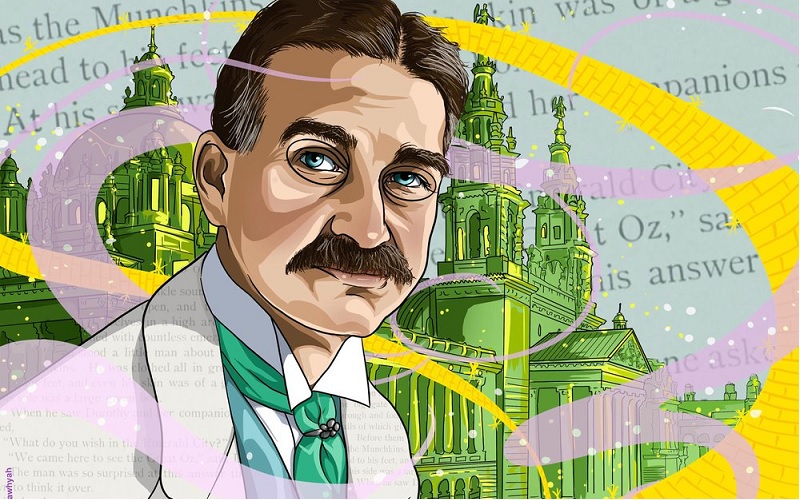L. Frank Baum, so the legend goes, used his experience visiting the White City of the 1893 World’s Fair in Chicago as inspiration for the Emerald City in his best-selling children’s book of 1900, The Wonderful Wizard of Oz. A new documentary film exploring the life and times of Baum has been released as part of the American Experience series on PBS.
“American Oz, the True Wizard Behind the Curtain” (aired April 19, 2021) includes a segment featuring Baum’s time in Chicago, where he transformed himself from a traveling salesman into a promotor of store window decorating, into an acclaimed children’s book author, into a reluctant author of a hit musical extravaganza. In 1893, while still in the first stage of that career trajectory, he visited the fairgrounds with his family on several occasions. Surprisingly, he wrote almost nothing about his World’s Fair experience at the time or later in life. Only memories and writings from other family members inform us of his visits to the Columbian Exposition. While it is tempting, and perhaps even reasonable, to assume that his vision of an Emerald City grew out seeing the White City, we are left with no solid evidence supporting this idea.
Kirstin Butler’s “The Wizard in the White City,” a companion essay to the television show, touches upon L. Frank Baum’s “long and winding road to Oz” and repeats the familiar claim that the Chicago World’s Fair inspired his life’s work. Harvard University historian Philip Deloria sees a broader connection of humbug themes, observing that “one of the things that happens in the Emerald City is the realization that all of this may just be a charade. The world that seems so alluring, and so true, and so desirous may all just be a fraud. And the White City gives us that as well.”
What I find so wonderful, so marvelous, so magical about Baum’s Wizard of Oz story is its tempting invitation for us to superimpose our own meaning and symbols onto its characters and terrain. The Wonderful Wizard of Oz has been interpreted as an allegory for Gilded Age politics, Christianity, Buddhism, and Theosophy. Its themes have been scrutinized through Freudian, feminist, gay, and many types of psychological lenses. Are they all simultaneously true? Were any the intent of the author? Baum assures us in his introduction that “The Wonderful Wizard of Oz was written solely to please children of today.” I believe him. Sometimes a scarecrow is just a scarecrow.
And yet … in the green glow of the capitol city of the Land of Oz, some see heaven, others an urban metropolis, others a fantastic department store. If you squint just right, you might see the dome of the Administration Building, the spires of the Turkish Village and a captive balloon escaping from its tether with a humbug wizard waving goodbye to the fairgrounds.

L. Frank Baum in the White/Emerald City. [Art by Mawhyah Milton for PBS.org.]
